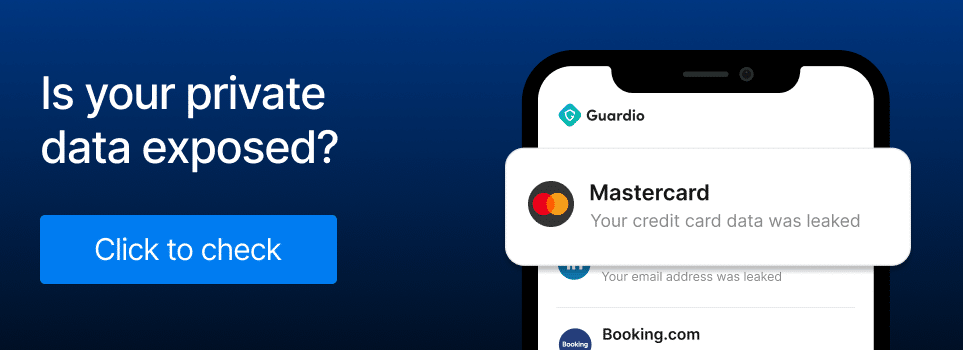In today’s digital world, society is moving away from a cash-based economy and towards contactless payments, e-commerce, and other payment methods. Credit Cards can now be made part of your smartphone wallet allowing easy and seamless payments. Despite all this evolution, however, one thing that has remained constant is cybercriminals and scams targeting this payment information. This article covers the different types of Credit Card scams and how to protect yourself against such fraudulent attacks.
Understanding Credit Card Scam
Credit Card Scams refer to the techniques used by scammers to access a person’s payment card data so they can either carry out fraudulent transactions or sell this information onward for a price. Scammers leverage numerous techniques to trick individuals into handing over this sensitive information via social engineering, identity theft, malware, etc. This can have severe consequences for the victims as they have to deal with the financial damage and stress that happens in the wake of a credit card scam.
As payments have become more and more electronic, attacks have also increased in sophistication. Advanced social engineering techniques are used to trick unsuspecting individuals and gain access to their data. It is crucial for every individual to understand these attacks and how to protect themselves.

Types of Credit Card Scams
- Fake accounts: Scammers commit identity theft and use this stolen personal information to open credit card accounts in the victim’s name. This can lead to severe financial problems as the victim might become liable for transactions that he or she never committed, and solving this can be a long and tiring process. It is essential to protect your personal information at all times and regularly review credit reports to make sure that no suspicious activity is occurring under your name.
- Skimming: Skimming involves placing a device on top of the ATM or Point of Sale Machine that accepts credit card payments to capture the used credit card information. The skimming device on the ATM or POS device secretly captures the full details of the card, which the scammer can later use to create cloned or counterfeit cards. Always be vigilant of suspicious devices or cameras near ATM Machines or POS devices. It is recommended to use ATMs in well-lit and public areas to minimize the risk of the device being compromised. Ensure that your keypad is also covered when the PIN information is on it so any secret cameras cannot view it.
- Phishing scams: Phishing unfortunately remains a tried and tested way for scammers to trick people into handing over their credit card data. By impersonating trusted organizations, they can cause the user to click on malicious links and enter their data on fraudulent websites capturing their payment data, Phishing red flags typically involve grammatical errors, and typos within content of the email, typically requiring urgent action from the user. Always be suspicious of emails claiming to be from the company and asking you for personal information. Avoid clicking on links within these emails and contact the companies directly to verify.
Social Media Scams: A more sophisticated version of the phishing scam involves attackers creating fake social media profiles to trick victims into handing over sensitive information. The nature of these platforms allows direct messaging instead of emails which attackers exploit to send messages pretending to be customer support or a trusted friend. Due to the user’s trust in these platforms, these attacks can have a higher success rate than standard phishing emails.

How to protect yourself from Credit Card Scams
Awareness is the first and most critical step in protecting oneself from Credit Card scams. As a credit card user, you must be highly cautious about the physical and digital security of your credit card information.
Keep the following in mind at all times:
- Make sure to carry out online transactions on secure websites that use encryption and other controls (the easiest way to check is to ensure the “https://” and padlock icon is visible in the website URL). Do not enter this information on websites that do not appear legitimate and verify their reputation via customer reviews, news, etc.
- Set up alerts for your credit card transactions and closely review your monthly statements for any transactions you are unfamiliar with. Report any anomalies to the bank or issue them immediately.
- Be aware of the telltale signs of phishing emails or telephone scams. Avoid clicking on links or providing your credit card information to callers who claim to be from your bank or credit card issuer. Always verify the identity of someone claiming to be from such organizations.
- Turn on additional features like multi-factor authentication for your online accounts, which add an extra layer of security for your accounts.
- Look into using temporary credit cards or “virtual” cards that typically are valid for a limited time only. This can help protect you in case the information gets compromised online.
When used together, these good practices can significantly reduce the risk of being compromised via a credit card scam. Despite all of these, however, if you find yourself a victim, immediately contact your bank or credit card issuer to report such activity. Look into canceling or freezing the compromised account so that additional transactions do not happen.

Conclusion
Credit card scams will not go away anytime soon and will only increase in sophistication as attackers find innovative ways to compromise your payment information. The combination of technical controls and awareness measures outlined in this article is the best way to stop yourself from being a victim of such scams. Vigilance and awareness is the best way to keep enjoying a secure and enjoyable online shopping experience!
Frequently Asked Questions
What are credit card scams?
Credit card scams involve techniques used by scammers to gain access to payment card data for fraudulent transactions or resale. These scams often employ social engineering, identity theft, and malware to trick individuals into revealing sensitive information.
What are the types of credit card scams?
Credit card scams include fake accounts, skimming, phishing, and social media. Fake accounts involve identity theft, skimming captures card information from ATMs or POS machines, phishing tricks individuals into providing data on fraudulent websites, and social media scams use fake profiles to deceive victims.
How can I protect myself from credit card scams?
To protect yourself, always transact on secure websites with encryption. Review your credit card statements regularly, set up transaction alerts, and report any suspicious activity immediately. Be cautious of phishing emails and telephone scams, verify identities before sharing information, enable multi-factor authentication, and consider using temporary or virtual credit cards.
What should I do if I become a victim of a credit card scam?
If you become a victim, immediately report the activity to your bank or credit card issuer. Consider canceling or freezing the compromised account to prevent further transactions. By following these measures and staying vigilant, you can reduce the risk of falling victim to credit card scams and enjoy a secure online shopping experience.

